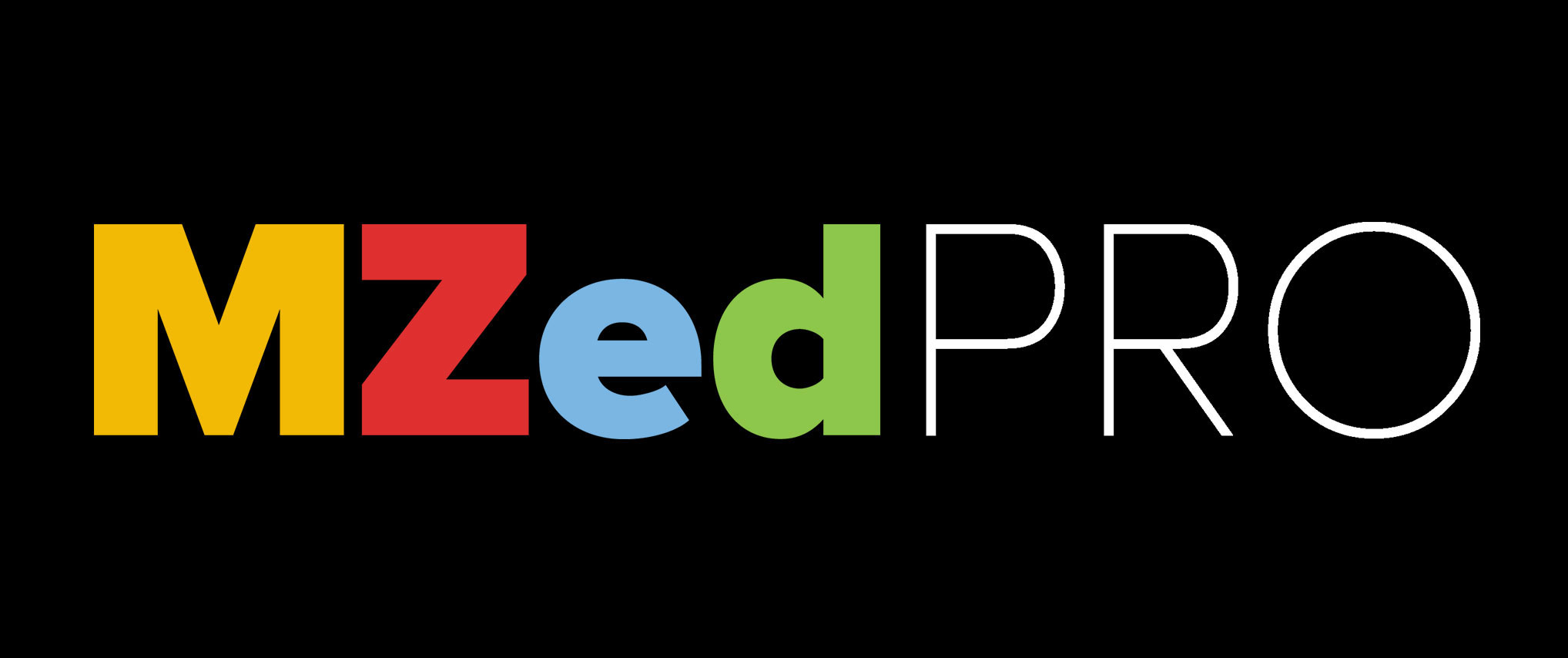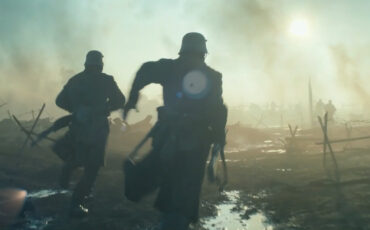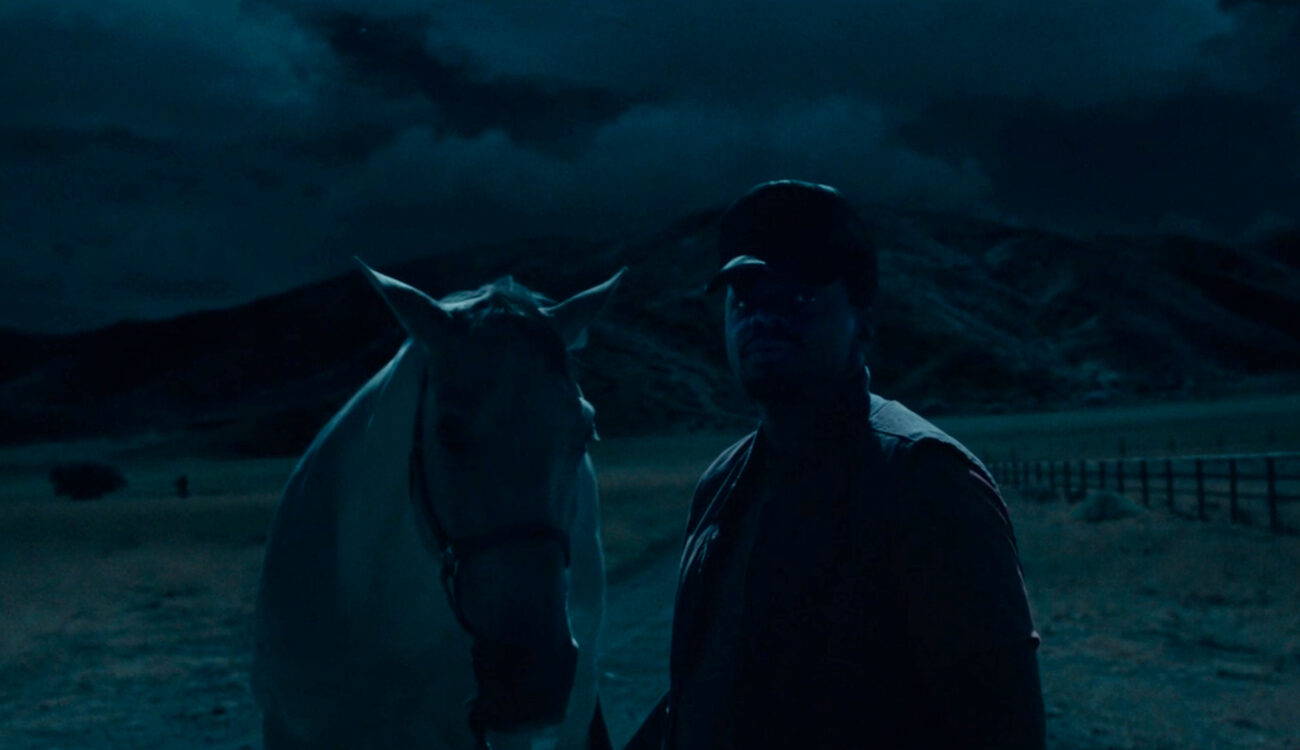
Every filmmaker knows how tricky it can be to film night scenes, especially outside and more specifically when capturing wide scopes and vast landscapes with no available lighting. That’s exactly where the director and writer Jordan Peele showed his mastery in the spectacular sci-fi horror feature “Nope”. In fact, a significant part of its story takes place after dark. So, the cinematographer Hoyte van Hoytema came up with an original approach to handle these kinds of sequences, essentially reinventing the old “Day-for-Night” trick.
The film’s story follows the Haywood siblings. After the mysterious death of their father, OJ, and Em try to hold the family business together, only to find that something is definitely off in the skies above their horse ranch. Eventually, they discover an extraterrestrial that lurks out at night and decide to gather evidence on it.
How to make this eerie story work visually? In the ASC Clubhouse conversation, Hoyte van Hoytema sits down with James Whitaker and takes us through the process, explaining cinematography tricks for the night scenes. If you want to learn from the master himself, please watch the whole interview on MZed.com.

Why shoot Day-for-Night?
“Day-for-Night” is a well-known and established filmmaking technique. For practical considerations such as budget and scheduling constraints, it is often necessary to film night scenes during daylight hours. But it’s also a solution when you need to capture scope. Hoyte remembers how he and Jordan Peele were scouting in Agua Dulce, California. They drove out to the field, exactly like the main protagonist does in “Nope”, and at first, everything around was pitch black. But as they walked away from the car, their pupils dilated and they saw the shapes of the mountains, stars, and the wideness of the landscape. At that moment, Hoyte knew he wanted to bring this concept into their film’s visuals.
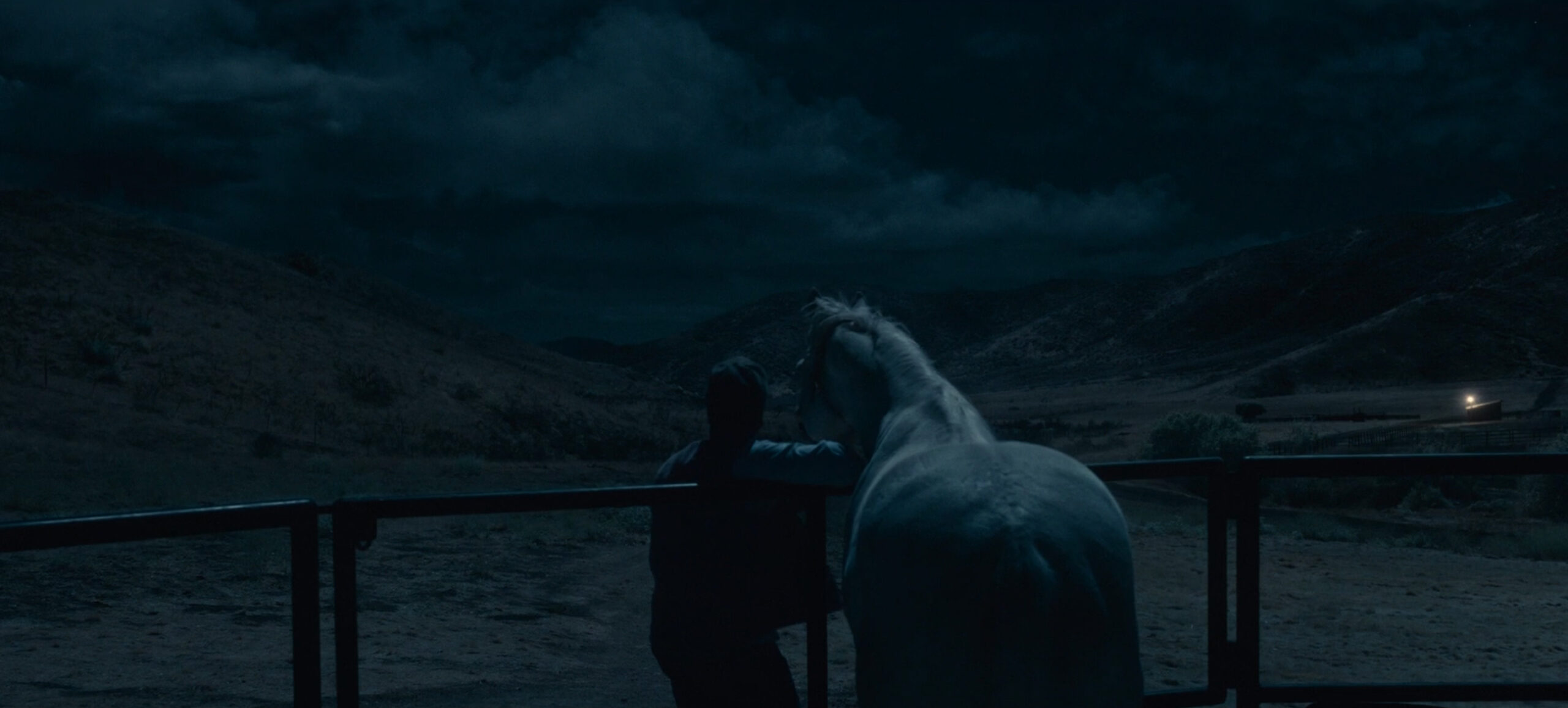
The problem was that there is no camera light-sensitive enough to capture this feeling of the night in its pure beauty and detail. At the same time, Hoyte van Hoytema didn’t want to rely too much on CGI, which is a common approach nowadays. So, it got him thinking.
The start of the creative process
In one of his previous works, “Ad Astra” by James Gray, van Hoytema faced a similar challenge. He had to shoot a lunar rover chase on the moon’s surface. Not an easy task, to fake hard sunlight in an atmosphere without air. You can’t apply several sources or use softboxes. So Hoyte came up with the idea to film with two cameras–the same trick they developed and perfected for “Nope”.
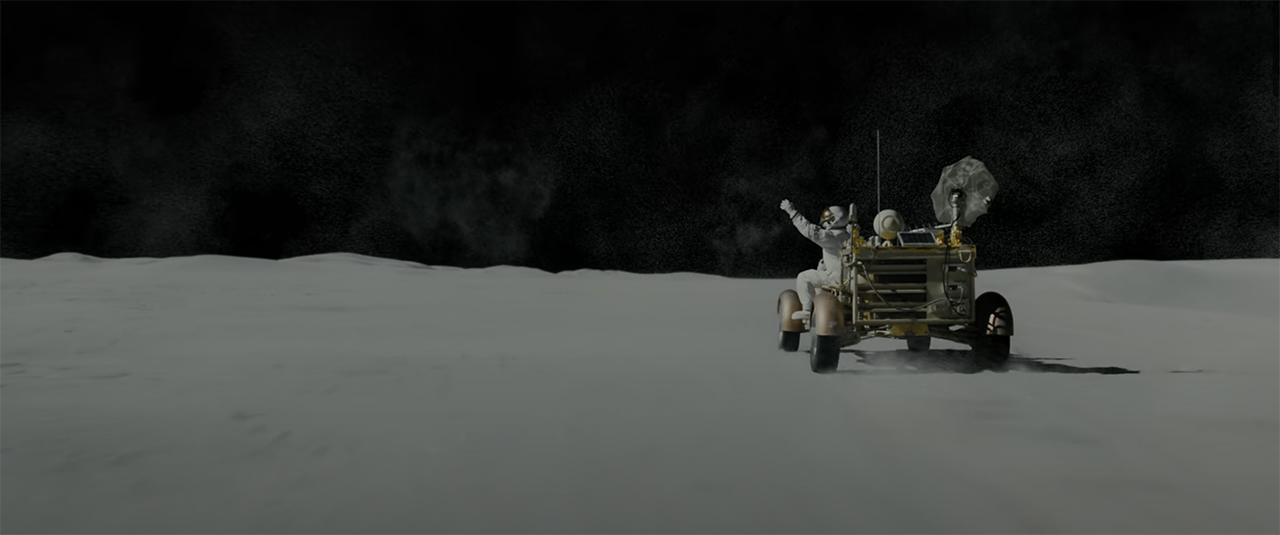
In “Nope”, filmmakers strived to create massive, sensational images, a spectacle that is so deeply addressed in the film’s topic. At the same time, they wanted the story to be relatable, humane, and grounded. According to van Hoytema, this groundedness came from the characters’ point-of-view, so it was important to him that he capture and communicate their vision, even in the dark.
The technical solution to filming night scenes
So, what was the trick? Practically all the night scenes (we will show some exceptions below) were shot during the day. However, Hoyte van Hoytema used two different cameras, which he mounted on decommissioned 3D-stereo rigs, and aligned them so that both captured the same images. That allowed creators to seamlessly overlay each frame in postproduction. The first camera shot infrared light with a narrow bandwidth, and the second filmed Panavision System 65mm film information.
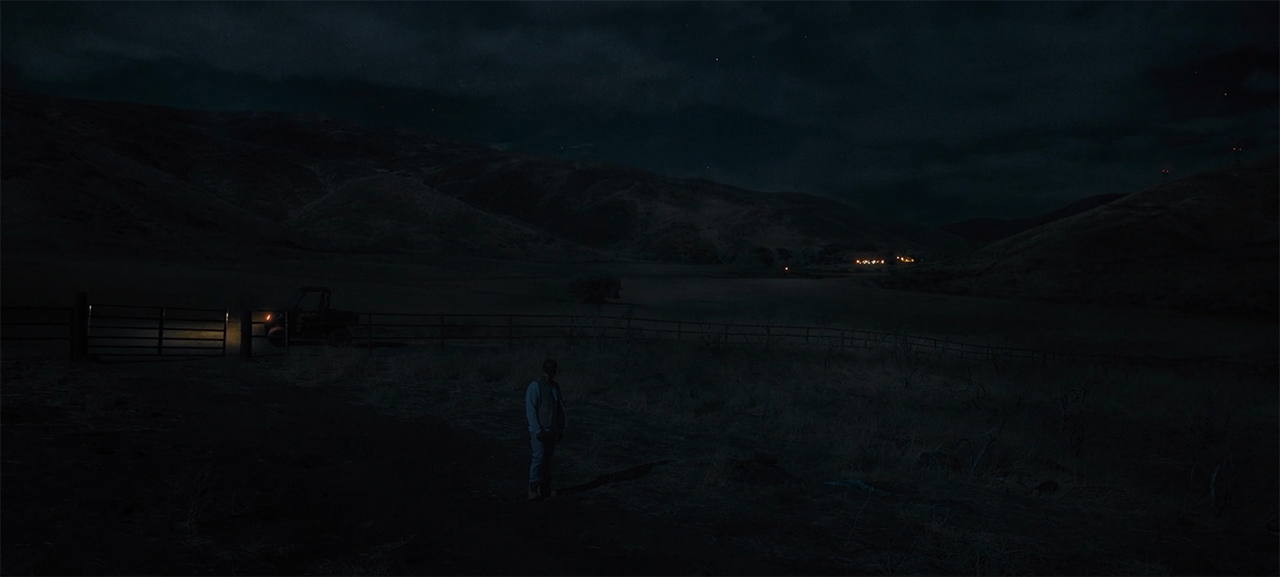
After some testing, van Hoytema realized that the way infrared light comes through and reflects is very similar to how our eyes respond to light and darkness at nighttime, only it cannot transfer colors. So they used the infrared camera as a guidance track for the exposure of different objects and the System 65mm for the color and grain information. The result is the memorable night scenes everybody talks about.
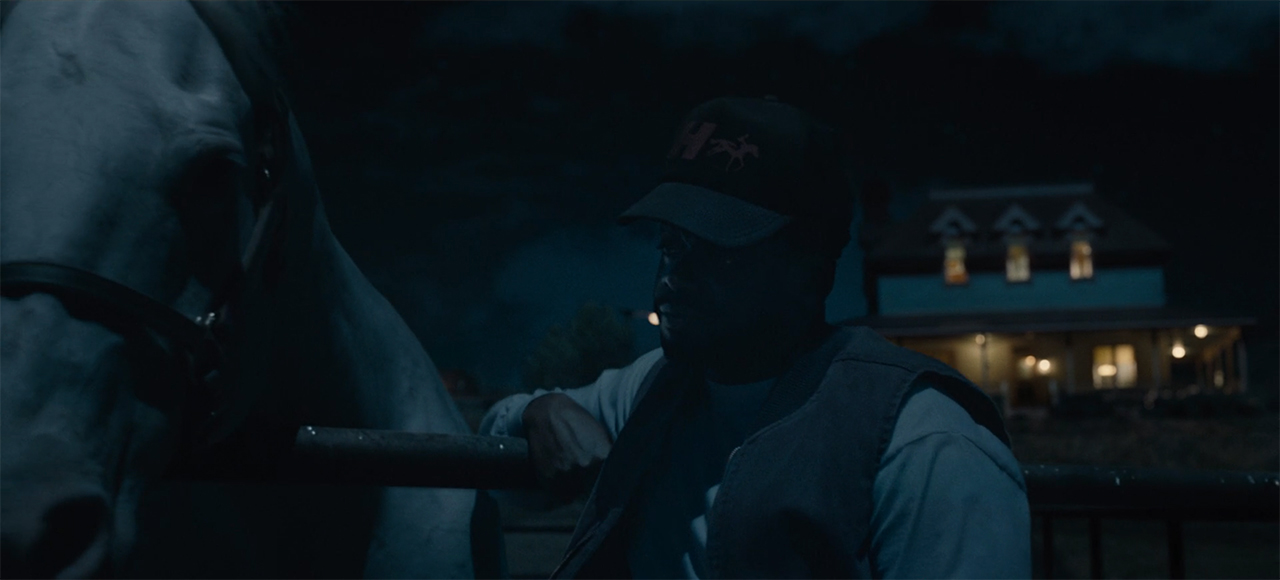
Of course, they also had to cheat. Do you see the film still above? Hoyte used the upgraded “Day-for-Night” approach on it as well. Naturally, there were no warm farmhouse lights in the background while the camera was rolling, so they shot aesthetic plates for those practicals at night and added them as CGI afterward.
Further challenges in the night scenes
Another good example of how things got complicated, as Hoyte points out, was this moment with a car in the screenshot below. In order to achieve a realistic headlights effect, they shot it at night, using a big overhead lightbox. Filmmakers still had to match this scene to the other night scenes with the unique look we talked about earlier, so they filmed plates during the day to show the surrounding mountains, fields, etc. in the same style. Afterward, the VFX team stitched those small pieces together. Sounds like a lot of work!
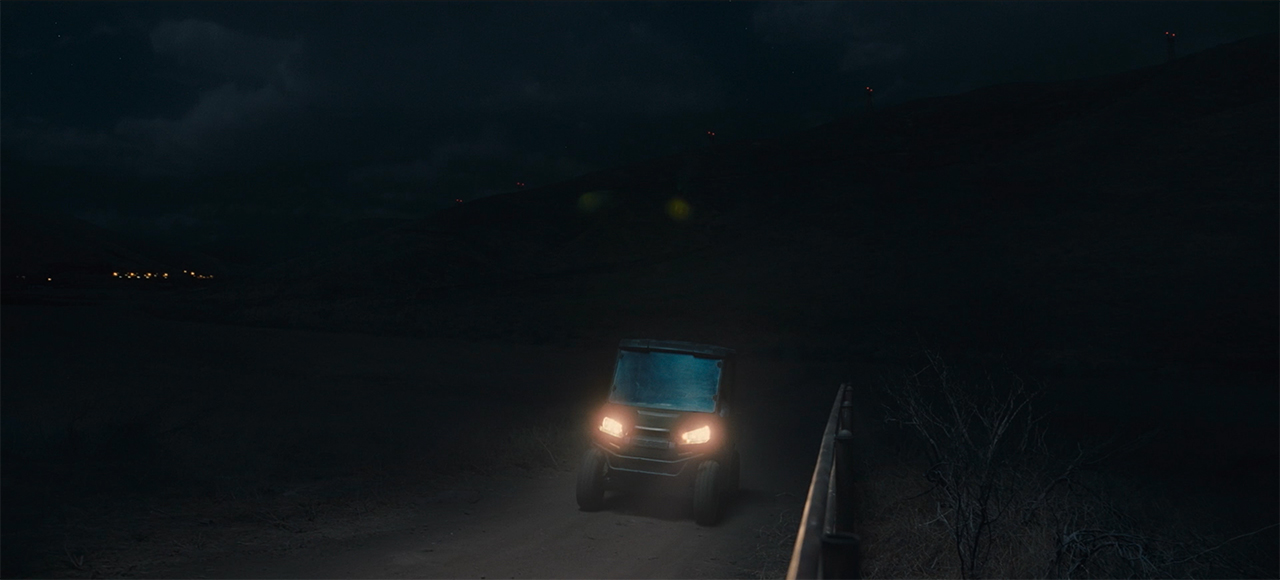
Another issue was IMAX–the system that Hoyte used for filming most of “Nope”. His invented “Day-for-Night” process didn’t work as you need an equivalent digital infrared sensor that is the same size as the gate. So, some of these visuals had to be extended on the top and the bottom of the frame in post-production.
How did they make it possible?
When you’re inventing something new, it’s natural to face concern and resistance, especially if your breakthrough idea includes complicated gear solutions and the challengers are the producers with the budget concerns.
I need to say, I’m very spoiled. You know that I can think of something like this, and then we actually can practically put it all together. (…) It’s great when you as a DP have a crazy idea, to also have a director who has enough enthusiasm to help you with it and push it through.
Hoyte van Hoytema, a quote from the ASC clubhouse conversation
Hoyte admits it helped that he had a working showcase from “Ad Astra”. Plus, in his opinion, everybody loves a challenge and building things from scratch. In the end, professionals in our industry are very keen to create images no one has seen before.
Was all the struggle worth it?
You tell me! I read different opinions, but most viewers are really amazed at how well the night scenes in “Nope” work. And yes, the creators often had to replace the sky in VFX (Hoyte van Hoytema also explains that it was significant for storytelling), but all in all, the overall dark and crispy look gets under your skin and creates the intense feeling they were after, doesn’t it? What do you think? Let us know in the comments below.
If you also want to learn how Peele and van Hoytema approached the film’s iconic Gordy the Chimp scene, what importance the director of photography’s scarf had, and why Hoyte finds pleasure in filming in harsh light from above–—head over to the whole ASC clubhouse conversation on MZed.com.
What else do you get with MZed Pro?
As an MZed Pro member, you have access to over 300 hours of filmmaking education, including The ASC Clubhouse Conversations. Plus, we’re constantly adding more courses (several in production right now).
For just $30/month (billed annually at $349), here’s what you’ll get:
- 50+ courses, over 750+ high-quality lessons, spanning over 400 hours of learning.
- Highly produced courses from educators who have decades of experience and awards, including a Pulitzer Prize and an Academy Award.
- Unlimited access to stream all content during the 12 months.
- Offline download and viewing with the MZed iOS app.
- Discounts to ARRI Academy online courses, exclusively on MZed.
- Most of our courses provide an industry-recognized certificate upon completion.
- Purchasing the courses outright would cost over $8,500.
- Course topics include cinematography, directing, lighting, cameras and lenses, producing, indie filmmaking, writing, editing, color grading, audio, time-lapse, pitch decks, and more.
- 7-day money-back guarantee if you decide it’s not for you.
Full disclosure: MZed is owned by CineD
Join MZed Pro now and start watching today!
Feature image credit: a film still from “Nope” by Jordan Peele, 2022.
